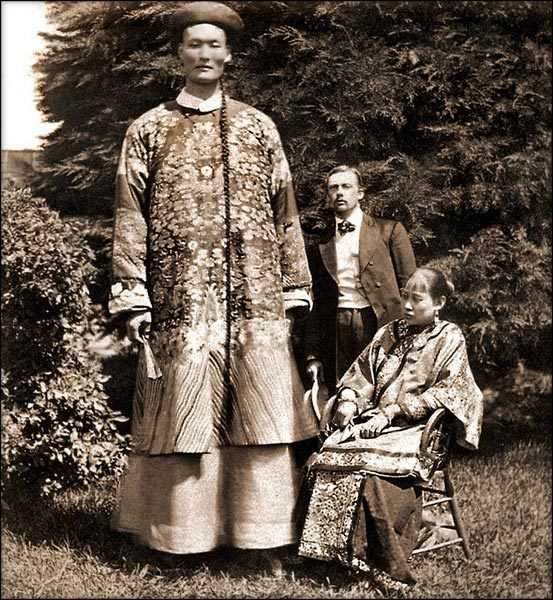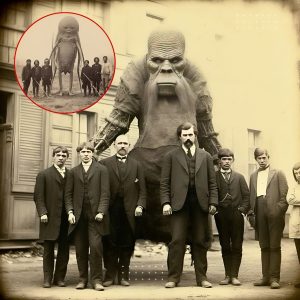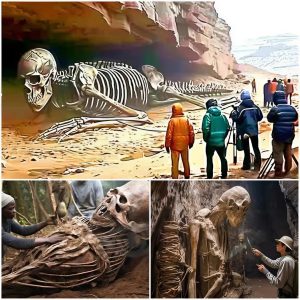In the annals of human history, legends of giants have captivated the imagination of cultures across the globe. From the towering Nephilim of the Bible to the mighty giants of Norse mythology, these colossal beings have been the subject of myth and speculation for centuries. But what if these tales were more than just stories? Recent discoveries have sent shockwaves through the archaeological community, presenting what some believe to be irrefutable evidence that giants once walked the Earth.
The Discovery: Unearthing the Past
It all began with a routine excavation in a remote region, where archaeologists stumbled upon what appeared to be the skeletal remains of an unusually large human-like figure. The bones, significantly larger than those of a typical human, were found in a burial site that dates back thousands of years. As more bones were unearthed, it became increasingly clear that these were not the remains of any ordinary human.
The skeletons, some standing over 12 feet tall in life, were remarkably well-preserved. The sheer size of these bones left the excavation team in disbelief. Could these remains be evidence of the giants that have long been relegated to the realm of myth and folklore? As the news of the discovery spread, the world was left in awe and shock.
The Evidence: Beyond Myth and Legend
For centuries, the existence of giants has been a topic of debate among historians, archaeologists, and the public. While ancient texts and oral traditions from various cultures mention giants, the lack of concrete evidence has led many to dismiss these stories as mere fantasy. However, the recent discovery has forced scholars to reconsider their stance.
Detailed analysis of the skeletal remains has revealed features that are both human and distinctly non-human. The bones are not only larger but also denser and more robust, suggesting that these beings were incredibly strong. The skulls, with their pronounced brow ridges and elongated jaws, bear a striking resemblance to the descriptions found in ancient texts.
Carbon dating has placed these remains at approximately 5,000 years old, coinciding with the time periods mentioned in many ancient records that speak of giants. Additionally, artifacts found alongside the skeletons, including oversized weapons and tools, further support the idea that these beings were not just a figment of the imagination.

The Implications: Rethinking Human History
The implications of this discovery are staggering. If giants did indeed exist, what does this mean for our understanding of human history? Could these beings have coexisted with early humans, influencing the development of ancient civilizations? The discovery raises more questions than it answers, challenging long-held beliefs and opening the door to a new chapter in the study of our past.
Some researchers speculate that these giants could be the remnants of a lost civilization, one that was ultimately wiped out by natural disasters or conflicts with early humans. Others suggest that the giants may have been the result of genetic mutations or environmental factors that allowed them to grow to such enormous sizes.
There is also the question of why these beings disappeared. Did they go extinct due to changes in the environment, or were they driven out by smaller, more agile humans? Theories abound, but one thing is certain: the discovery of these remains has sparked a renewed interest in the possibility that giants were once a reality.
The Reaction: A World in Shock
As news of the discovery spread, reactions ranged from awe to skepticism. Many were quick to embrace the idea that giants once roamed the Earth, seeing it as validation of ancient texts and traditions. Others remained cautious, calling for further study and verification before drawing any definitive conclusions.
In the academic community, the discovery has ignited heated debates. Some scholars argue that the evidence is too compelling to ignore, while others insist that more research is needed to rule out other explanations, such as gigantism or other medical conditions that could account for the size of the bones.
Despite the controversy, there is no denying the impact of the discovery. Museums and universities are already planning exhibitions and conferences to explore the findings, and documentaries and books are in the works to bring the story of the giants to a global audience.

Conclusion: The Giants Among Us
The discovery of the giant skeletal remains has shaken the foundations of what we thought we knew about human history. While questions remain, the evidence is compelling enough to suggest that the legends of giants may not be as far-fetched as once believed. As researchers continue to study these remains, the world watches with bated breath, eager to learn more about the mysterious giants that may have once walked among us.
In a world where the lines between myth and reality are often blurred, the discovery of these giant skeletons serves as a powerful reminder that history still holds many secrets, waiting to be uncovered. Whether giants were real or not, the fascination they evoke continues to captivate us, challenging our understanding of the past and inspiring us to look beyond the boundaries of conventional knowledge.





